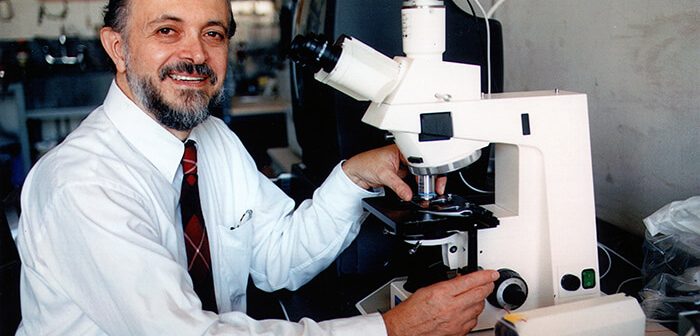He worked on the chemistry of the ozone layer: Who is Mario Molina?
Molina's contributions to the understanding of atmospheric chemistry and his advocacy for environmental protection continue to inspire scientists and policymakers around the world.

Mario Molina was a Mexican-American chemist born on March 19, 1943, and died on October 7, 2020. He was awarded the Nobel Prize in Chemistry in 1995, along with two other scientists, for his work on the chemistry of the ozone layer in the atmosphere.
Molina studied at the National Autonomous University of Mexico (UNAM) before going to the University of Friborg in Switzerland and later at the University of California, Berkeley, where he received his Ph.D. in Physical Chemistry in 1972. After completing his education, he worked at various institutions including the California Institute of Technology Jet Propulsion Laboratory, the Massachusetts Institute of Technology, and the University of California, San Diego.
Mario José Molina Henríquez (19 March 1943 – 7 October 2020) was a Mexican chemist. He played a pivotal role in the discovery of the Antarctic ozone hole and was a co-recipient of the 1995 Nobel Prize in Chemistry for his role in discovering the threat to the Earth's ozone layer from chlorofluorocarbon (CFC) gases. He was the first Mexican-born scientist to receive a Nobel Prize in Chemistry and the third Mexican-born person to receive a Nobel prize.
In the mid-1970s, Molina and his colleague Sherwood Rowland began studying the potential impact of chlorofluorocarbons (CFCs) on Earth's atmosphere. They discovered that CFCs, widely used in refrigerants, aerosol sprays, and other products, can break down ozone molecules in the stratosphere, leading to ozone depletion and increased harmful ultraviolet radiation reaching the Earth's surface. Their findings caused international concern and led to the 1987 Montreal Protocol, an agreement between countries to phase out the production and use of CFCs.
Besides the Nobel Prize, Molina has received numerous other honors and awards for his work, including the Presidential Medal of Freedom in 2013. Molina was also a strong advocate of scientific research and education, particularly in his native Mexico and other developing countries.
Molina's contributions to the understanding of atmospheric chemistry and his advocacy for environmental protection continue to inspire scientists and policymakers around the world.
Contributions to Science
Discovery of the ozone hole: In the 1970s, Molina and his colleague Sherwood Rowland discovered that chlorofluorocarbons (CFCs) could destroy ozone molecules in the atmosphere, leading to ozone depletion. Their work helped explain the growing "ozone hole" over Antarctica and sparked international concerns about the environmental impact of CFCs.
Understanding the chemistry of the atmosphere: Molina's research helped establish the field of atmospheric chemistry, which studies the chemical processes that occur in Earth's atmosphere. It has contributed significantly to our understanding of the chemical reactions that take place between pollutants, ozone, and other compounds in the atmosphere.
Environmental advocacy: Molina was a strong advocate for environmental protection and public awareness of environmental issues. It has worked to educate policymakers, business leaders, and the public on the importance of protecting the ozone layer and reducing greenhouse gas emissions.
Science diplomacy: Molina has also played a key role in promoting scientific cooperation between the United States and Mexico. He helped found the Mario Molina Center for Energy and Environment Strategic Studies, which focused on promoting sustainable development and reducing greenhouse gas emissions in Mexico and other countries.
